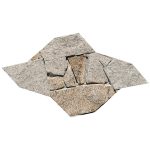Introduction:
Victorian cultured stone, a material that embodies the essence of elegance and sophistication, has been a popular choice for architectural and interior design projects for centuries. Originating from the Victorian era, this unique stone has stood the test of time and continues to captivate designers, builders, and homeowners alike with its timeless beauty and versatility. In this article, we will delve into the history, characteristics, and applications of Victorian cultured stone, exploring its enduring appeal and the reasons behind its continued popularity in modern design.

History of Victorian Cultured Stone:
The Victorian era, which spanned from 1837 to 1901, was characterized by a revival of classical architectural styles and a focus on intricate detailing and ornamentation. During this period, the use of natural stone in construction and design was prevalent, with an emphasis on craftsmanship and quality. However, stepping stones and limited availability of natural stone led to the development of cultured stone as a more affordable and accessible alternative.
Victorian cultured stone was created using a blend of natural materials such as cement, aggregates, and pigments, molded to mimic the appearance of natural stone. This innovative technique allowed for the mass production of stone-like elements that could be easily installed in a variety of architectural settings, from grand mansions to humble cottages. The intricate detailing and ornate patterns of Victorian cultured stone reflected the opulence and grandeur of the era, making it a popular choice for embellishing facades, fireplaces, and interior spaces.
Characteristics of Victorian Cultured Stone:
Victorian cultured stone is renowned for its distinctive characteristics that set it apart from other building materials. One of the key features of this stone is its ability to replicate the look and feel of natural stone, with a rich texture and color variation that closely resembles quarried stone. The intricate detailing and ornate patterns of Victorian cultured stone capture the essence of Victorian design, adding a touch of elegance and sophistication to any space.
Another notable characteristic of Victorian cultured stone is its durability and longevity. Unlike natural stone, which may be prone to wear and weathering over time, cultured stone is designed to withstand the elements and maintain its beauty for years to come. This resilience makes Victorian cultured stone a practical choice for both interior and exterior applications, providing a low-maintenance and cost-effective alternative to natural stone.
Applications of Victorian Cultured Stone:
Victorian cultured stone has a wide range of applications in architectural and interior design, from grand historical buildings to modern residential homes. One of the most common uses of Victorian cultured stone is in the construction of facades and exterior walls, where it can be used to create a striking visual impact and enhance the overall aesthetic of a building. The intricate detailing and ornate patterns of Victorian cultured stone add a sense of grandeur and sophistication to any architectural style, from Victorian-era mansions to contemporary structures.
In addition to exterior applications, Victorian cultured stone is also popular for interior design projects, particularly in the creation of feature walls, fireplaces, and accent pieces. The versatility of Victorian cultured stone allows designers to incorporate it into a variety of design styles, from traditional and classic to modern and eclectic. Whether used as a focal point in a living room or as a decorative element in a bathroom, Victorian cultured stone adds a touch of elegance and charm to any space.
Furthermore, Victorian cultured stone can be custom-designed to suit individual preferences and project requirements, allowing for endless possibilities in terms of color, texture, and pattern. Whether seeking to replicate the look of a historic building or to create a contemporary design statement, Victorian cultured stone offers a versatile and customizable solution for architects, designers, and homeowners alike.
Conclusion:
Victorian cultured stone remains a timeless and elegant choice for architectural and interior design projects, embodying the essence of sophistication and beauty that defined the Victorian era. With its distinctive characteristics, durability, and versatility, Victorian cultured stone continues to captivate designers and homeowners around the world, offering a practical and aesthetically pleasing alternative to natural stone. Whether used to embellish facades, accentuate interior spaces, or create custom design elements, Victorian cultured stone adds a touch of timeless elegance to any project, ensuring its enduring popularity for generations to come.
